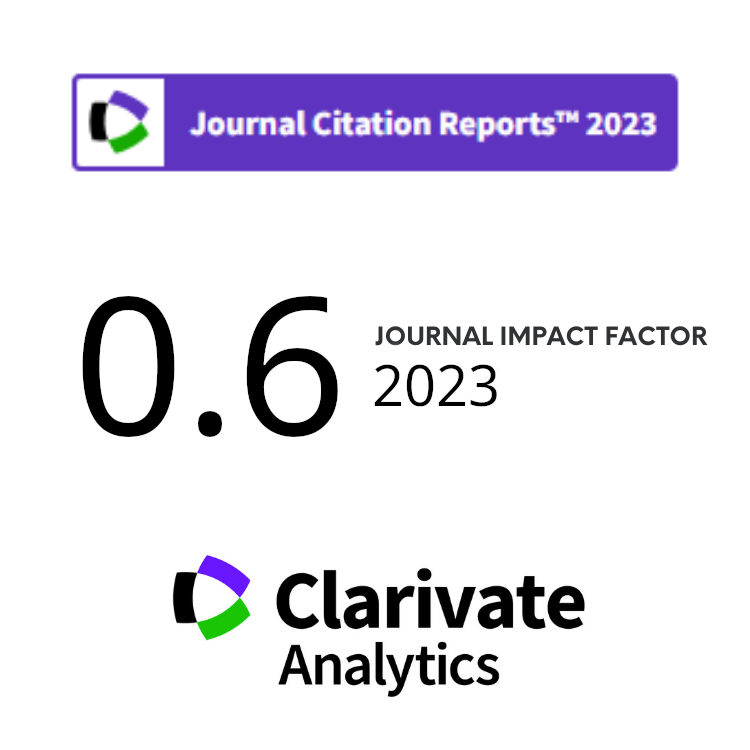Detection of Radon Exhalation from Various Building Materials Using CR-39, RAD7, and Biosensors
Abstract
Study aimed to design and manufacture two biosensors, namely BIOS-I and BIOS-II, for 222Rn and Pb+2 measurements in building materials and soil samples. For comparison, the conventional detectors of RAD7 and CR-39 were used. The biosensor material used was based on ssDNA rich guanine or primer. The two biosensors have a difference in the sequence of the nitrogenous bases. The measurement revealed that the average of 222Rn exhalation by the BIOS-Ι was 373.30 Bqm-3, while the BIOS-ΙΙ was 342.29 Bqm-3. The average 222Rn exhalation measured by the CR-39 detector was 326.17 Bqm-3, whereas by the RAD7 detector it was 319.95 Bqm-3. This study found that 222Rn exhalation in the Indian and Chinese granites, soil, and Iraqi mosaic samples was higher than the limits recommended by WHO, while the rest of the samples were within the permissible limits. It is also known that there is a very weak positive correlation between BIOS-Ι or BIOS-ΙΙ and humidity, while a very weak negative correlation was found between them and temperature. There is a very strong positive correlation between radon exhalation recorded by RAD7 and humidity. On the other hand, there are no statistically significant differences between BIOS-I and BIOS-II at (level 0.01), while there are statistically significant differences between BIOS-I and CR-39 or RAD7 at level 0.01. It was concluded that the manufactured biosensors have better detection for radon than RAD 7 and CR-39 detectors.
Keywords
Full Text:
PDFReferences
IUPAC, Compendium of Chemical Terminology, 2nd ed., International Union of Pure and Applied Chemistry, Research Triangle Park, NC (1997).
G. Y. Kim, J. Shim, M. S. Kang et al., J. Environ. Monit. 10 (2008) 632.
R. M. Kong, X. B. Zhang, L. L. Zhang et al., Chem. Commu. 37 (2009) 5633.
D. Popović and D. Todorović, Phys. Chem. Techn. 4 (2006) 11.
K. Freyer, H. C. Treutler, G. Just et al., J. Radioanal. Nucl. Chem. 257 (2003) 129.
B. Nodari, M. Caldara and V. Re, Radon Fast Detection and Environmental Monitoring with a Portable Wireless System, 6th International Workshop on Advances in Sensors and Interfaces (IWASI) IEEE (2015) 254.
D. Krewski, J. H. Lubin, J. M. Zielinski et al., Epidemiol. 16 (2005) 137.
M. Torres-Durán, A. Ruano-Ravina, I. Parente-Lamelas et al., Eur. Respir. J. 44 (2014) 994.
C. Papastefanou. J. Environ. Radioact. 63 (2002) 271.
Y. Tan, D. Xiao, Q. Tang et al., Stochastic Environ. Res. Risk Assess. 29 (2015) 755.
G. Espinosa, J. I. Golzarri, A. Chavarria et al., Radiat. Meas. 50 (2013) 127.
J. M. Lee and G. Kim, J. Environ. Radioact. 89 (2006) 219.
H. J. Albazoni and B. A. Almayahi, Int. J. Radiat. Res. 20 (2022) 245.
M. Zalewski, M. Tomczak and J. Kapata, Pol. J. Environ. Stud. 10 (2001) 183.
A. C. Bhasikuttan, J. Mohanty and H. Pal et al., Angew. Chem. 119 (2007) 9465.
R. M. Uda, T. Matsui and M. Takei, Supramol. Chem. 29 (2017) 553.
H. Sun, X. Li, Y. Li et al., Anal. 138 (2013) 856.
A. H. Abboud and B. A. Almayahi, Heliyon 7 (2021) e06590.
N. Kylilis, P. Riangrungroj, H. E. Lai et al., ACS Sens. 4 (2019) 370.
Q. K. H. Al-Atafy, J. D. M. Al-Janabi and B. A. A. Al-Mayahi, J. Phys. Conf. Ser. 1999 (2021) 012024.
DOI: https://doi.org/10.17146/aij.2022.1178
Copyright (c) 2022 Atom Indonesia

This work is licensed under a Creative Commons Attribution-NonCommercial-ShareAlike 4.0 International License.











